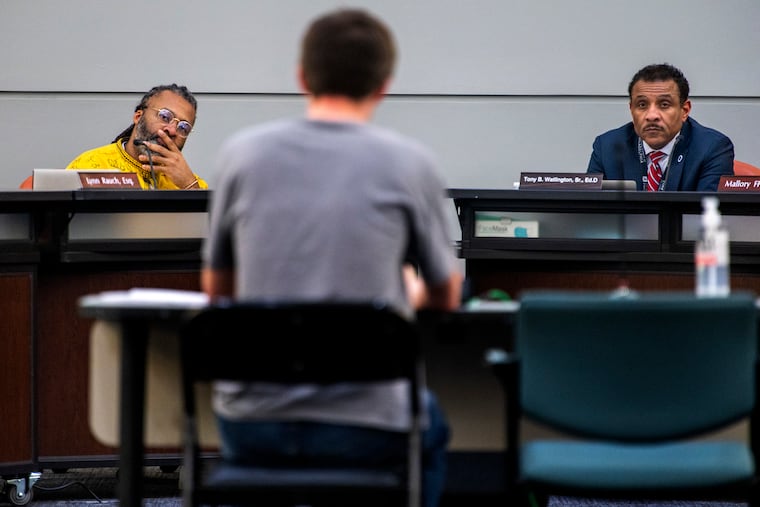More teachers, more school safety officers: Here’s what’s planned for Philly’s $4.5 billion budget
The school district will spend $22,379 per student in the 2023-24 school year, officials said — a 5.3% increase over the current school year. But a fiscal cliff is coming.

Philadelphia schools will have more teachers, more counselors, more climate staff and more school safety officers for the 2023-24 school year, officials heard Thursday night.
Though the district’s enrollment is down, the school system projects across-the-board increases in nearly every employee category, Mike Herbstman, the Philadelphia School District’s chief financial officer, told school board members at a hearing for the district’s proposed $4.5 billion budget.
The school district will spend $22,379 per student in the 2023-24 school year, officials said — a 5.3% increase over the current school year.
The school system plans for 15,037 school-based staffers next year, up from 14,774 this year. (Of those, 8,690 will be teachers, vs. 8,543 this year.)
The district proposes a 7.6% increase in spending on traditional public schools — it will spend $2.4 billion on its 216 schools, and a 19% jump in spending at non-district-operated schools, to the tune of $1.5 billion.
» READ MORE: Philly schools will spend $20 million to provide free summer programs
Budget documents show planned increases in school safety spending. The district plans to add 15 school safety officers and two safety supervisors, expand the safe paths program to protect students traveling to and from school, provide additional counselors to the highest-need schools, buy a new data-management system to help manage the district’s environmental needs, launch an attendance marketing campaign, purchase a two-way communication system for schools, renovate career and technical education facilities, buy new curriculum, and provide new supports for English language learners.
Overall, that increased spending is due largely to the availability of federal COVID-19 relief funds, money that will soon disappear, throwing into question whether the additional staff and programs will be available in future years.
The fiscal cliff comes in early 2025, and the district, alone in Pennsylvania as having no control over its own revenues, will not be able to make ends meet just after 2027, Herbstman said.
And though there are increases for the 2023-24 school year, the budget falls far short of what a Commonwealth Court judge said Philadelphia and other low-wealth districts are being denied — educational parity with the state’s wealthier school systems. One study estimates Philadelphia schools are underfunded by about $1 billion annually.
» READ MORE: Two Philly schools closed by asbestos have dates to return to in-person learning; another remains virtual
“This budget is an incremental budget,” Herbstman said, adding the spending plan does not allow for the “transformational change” that Philadelphia needs. Citywide, just 36% of district students read on grade level and 21% of students met state standards in math.
The board took no action on the budget Thursday night. It’s slated for adoption in late May.
After the budget hearing, the board moved into its monthly action meeting. In his report to the board, Superintendent Tony B. Watlington Sr. shared dropout figures for the first time.
Watlington has said he wants to prioritize student and teacher attendance and dropout prevention as a way to tackle academics. Though the superintendent has been sharing attendance figures monthly since he began his job in June, the school system wanted to make certain its dropout numbers were accurate before sharing.
Through the end of March, Watlington said, 3,494 district students had dropped out. That’s nearly identical to the 3,595 who had dropped out by the end of March 2022. By the end of the 2021-22 school year, 3,917 students had dropped out.
“It is critical that we not throw these children away,” Watlington said. “It is critical that we allocate time and resources to addressing this very important problem.”
A study estimates that each dropout loses $405,000 over their lifetime. That translates to a $1.4 billion price tag for the district’s dropouts to date this school year.
Board member Sarah-Ashley Andrews said the dropout problem has a very real impact on public safety.
“I worry about the people getting shot, the people getting killed,” Andrews said. “And most of them are dropouts.”